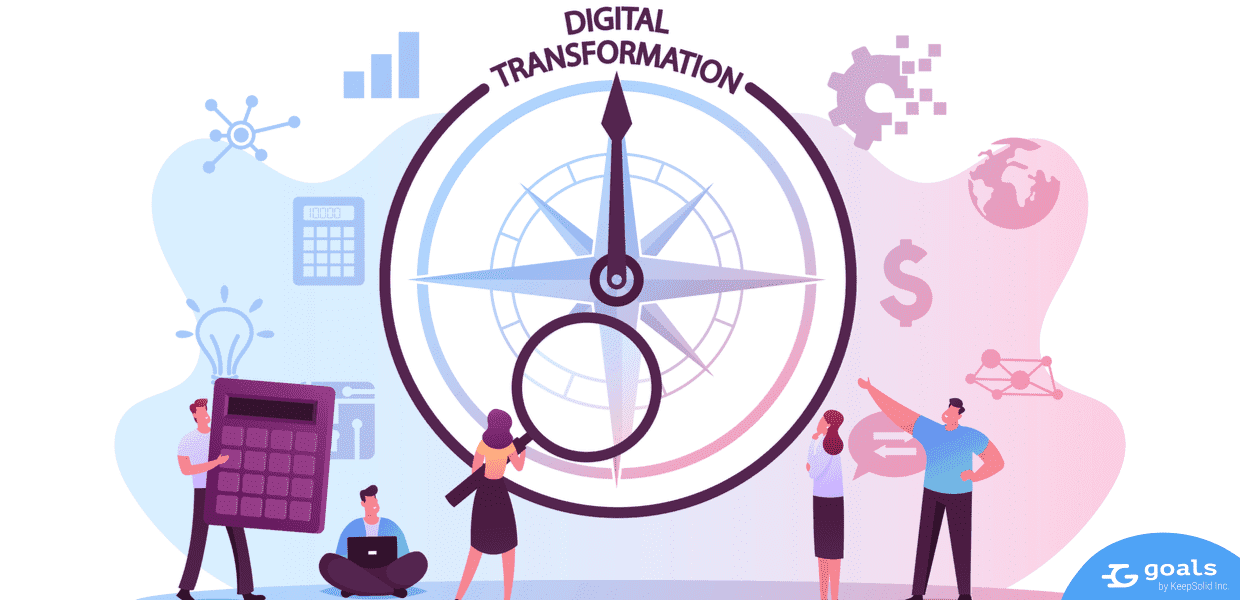What is Digital Transformation?
Digital transformation (DX or DT), sometimes also called digital business transformation, is the operational, infrastructural, and cultural shift within an organization or an industry through the integration of digital technologies and related skills and processes at all levels and across all functions. It is a comprehensive and strategic process where an organization revisits its way of operating – from internal processes to customer interactions – to achieve better decision-making, promote game-changing competencies and improve customer experience.

Digital transformation is a holistic approach aimed at creating a business that is more customer-centric, agile, streamlined and efficient and at the same time more innovative and able to tap into state-or-the-art technologies, such as cloud computing, artificial intelligence, or big data.
Digital Culture Elements
One of the key goals of digital transformation is to achieve a new business culture that will promote new values:
- Customer, or external focus over internal orientation
- Delegation of work over control
- Exploration over caution
- Action over planning
- Collaboration over individual effort
Areas of Digital Transformation
- Digital transformation is a complex process that requires changes in all business areas:
- Business functions across departments: marketing, human resources, administration, customer support, operations, etc.
- Business processes: including business process management, optimization, and automation with new technologies.
- Business models: from the go-to-market strategy to finding new revenue sources and approaches to the traditional business.
- Business ecosystems: the networks of partners and stakeholders that can be built upon the solid basis of innovation assets, such as data and actionable intelligence.
- Business domain: the use of digital technologies to redefine products and services and even blur boundaries between industries.
- Organizational culture: embracing digital maturity, leadership, and knowledge worker silos as key values to establish a customer-centric, agile and hyper-aware business.
Digital Transformation Strategy
Digital transformation requires a strategy to identify and analyze the transformation goals and the current situation and to create an action plan of how to move forward on a transformational journey in a meaningful way. In this sense, a digital transformation strategy is a plan to help a business analyze their needs and gaps, understand the role of technology, and adjust objectives.
How to Create a Digital Transformation Strategy
To ensure that digital transformation is successful, the digital transformation strategy should answer essential questions as to what will be changed, why the change is needed, who will lead the change and how the transformation will be moved forward. A good digital transformation strategy covers the following matters
- Business vision
Before starting the digital transformation journey, get a clear understanding of what experience you want to achieve, what are the strategic gaps and everyday challenges, how they can be resolved with the help of technology, and what experience you are aiming to provide to your customers. - Leaders and proponents
It is important to involve the right executives in the digital transformation process that will see the value in digital transformation and will have the relevant knowledge and expertise. - Team of experts
Digital transformation requires technical expertise and management skills. To move the organization forward, it is essential to build a team of right people that will be willing to learn new technologies, embrace new ideas and be first to adapt to the new reality. - Focus on culture
Everyone in the organization needs to understand the vision and the destination of your digital transformation journey. Organizational changes affect everyone, so the people need to have a clear picture of why it is important. - The right technology
The right questions before implementing any new technology are if it fills a specific gap in the organization and if it is aligned with the digital transformation strategy. Answering these questions will save you from investing into unnecessary and distracting digital platforms, products or services.
Digital transformation is an ongoing process with no finish line. For many organizations, it becomes the core of pushing business forward to achieve sustainable growth and stay ahead of competition in a fast-changing market.



